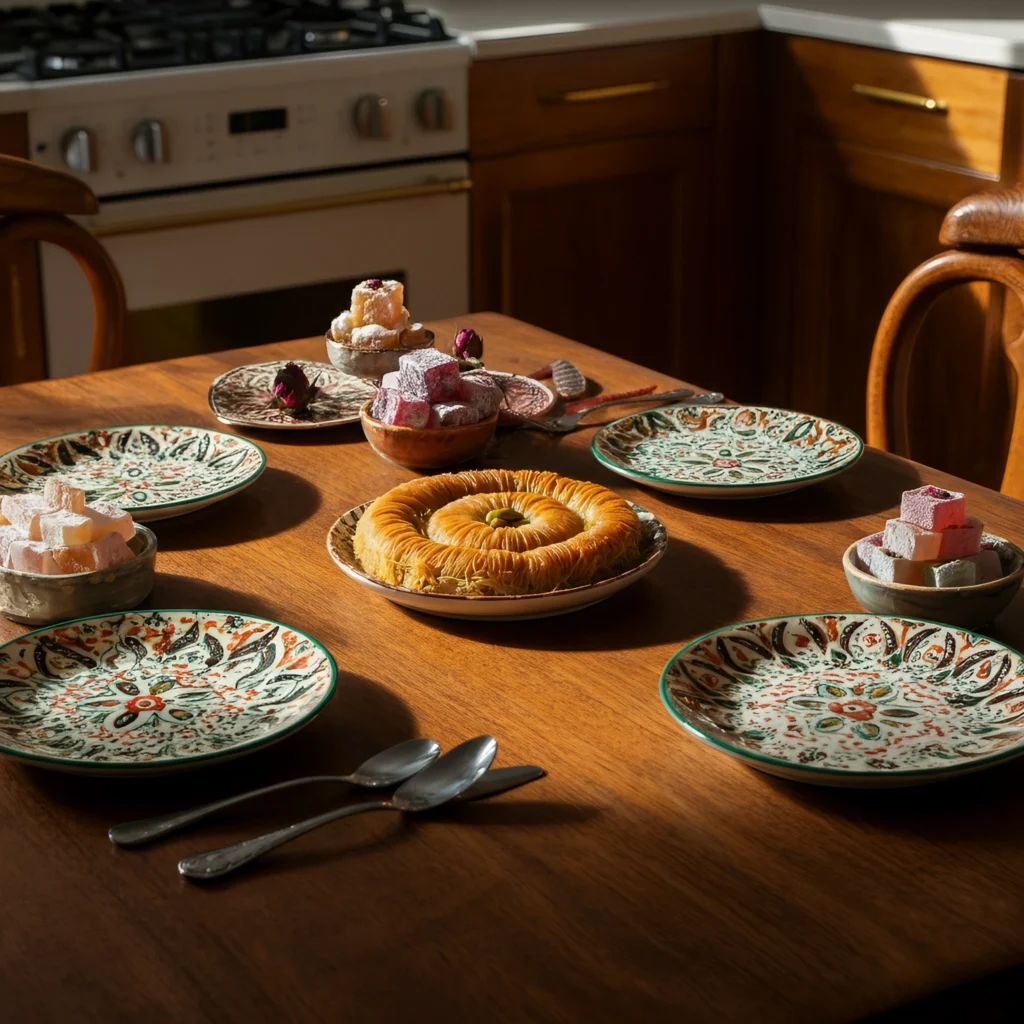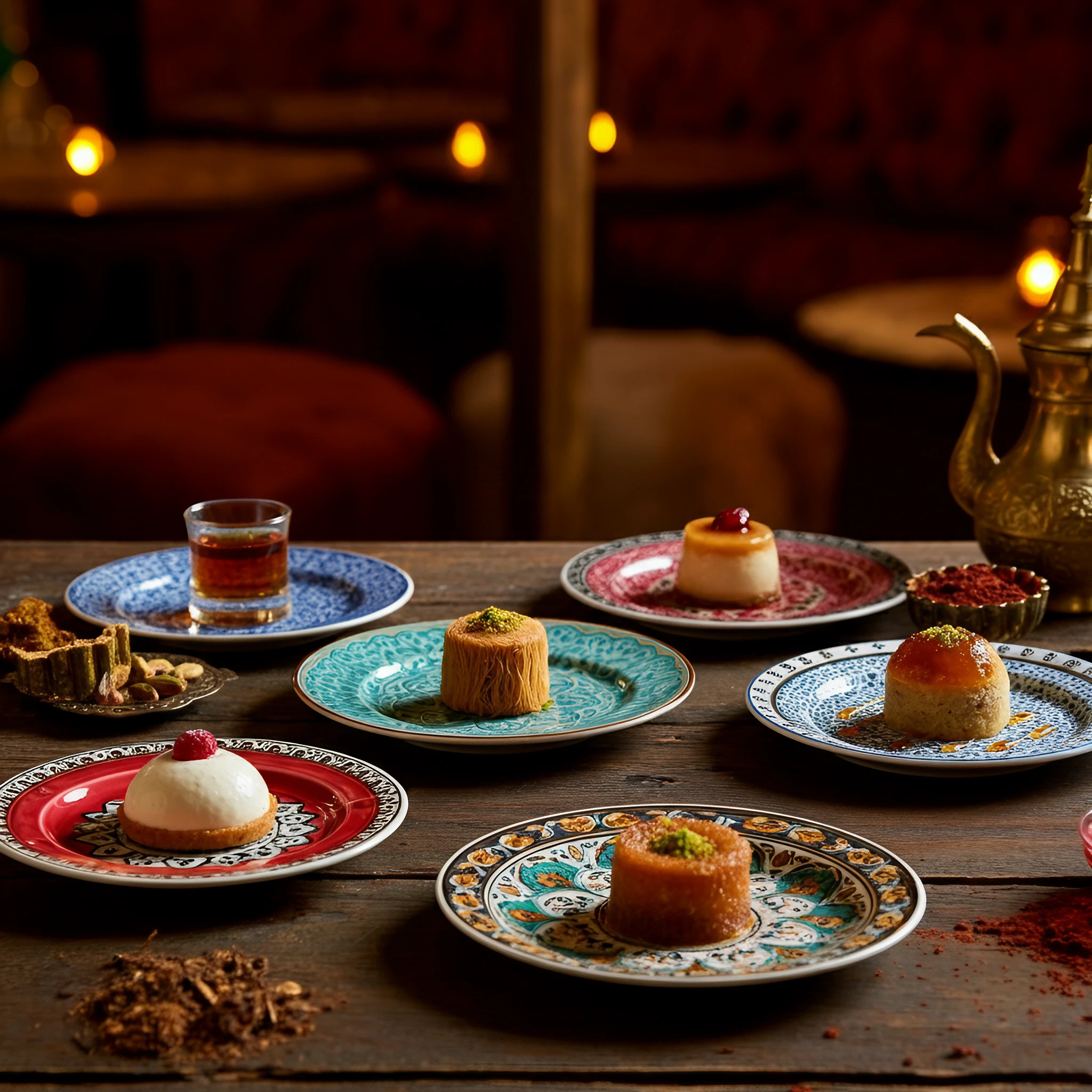Table of Contents
Top 10 Middle Eastern Desserts You Need to Try Right Now
Middle Eastern cuisine is a treasure trove of rich flavors, captivating aromas, and centuries-old traditions. At its heart lie the desserts—sweet masterpieces that blend nuts, spices, and floral notes into creations that are nothing short of magical. These desserts aren’t just food; they are an integral part of Middle Eastern culture, served during festivities, family gatherings, and moments of celebration.
Whether you’re a seasoned foodie exploring world cuisines or someone looking for the perfect introduction to Middle Eastern flavors, this guide will walk you through 10 iconic desserts you simply can’t miss. From flaky pastries to creamy puddings, discover the history, flavors, and cultural significance of these beloved Middle Eastern sweets—and maybe even gather inspiration to try them at home!
The Allure of Middle Eastern Desserts
Middle Eastern desserts are celebrated for their unique blend of flavors and textures, using ingredients like honey, rose water, orange blossom, dates, and nuts. These sweets are much more than delicious—they are woven into the fabric of Middle Eastern hospitality and traditions. From grand wedding feasts to intimate Ramadan celebrations, desserts are symbols of community and generosity.
The true beauty of Middle Eastern desserts lies in their diversity. They can range from crispy and nutty to soft and creamy, yet all share a common thread of indulgence and artistry. Now, let’s explore 10 desserts that define this rich culinary heritage.
Top 10 Middle Eastern Desserts to Try
1. Baklava
An iconic treat, baklava is synonymous with Middle Eastern desserts. Layers of crisp, buttery phyllo pastry are filled with finely chopped nuts (often pistachios or walnuts) and doused in a fragrant honey or sugar syrup. Believed to have originated from the Ottoman Empire, baklava is a celebration staple across Turkey, Lebanon, and beyond.
Pro Tip: For the best baklava, visit authentic Turkish or Lebanese bakeries, or try making it at home for a fun culinary challenge.
2. Kunafa
Kunafa is a dessert that exemplifies indulgence. A layer of shredded phyllo or semolina pastry envelopes creamy cheese or thickened cream, baked to perfection, and soaked in aromatic sugar syrup. This dessert, popular in Palestine, Jordan, and Egypt, boasts a crispy golden crust balanced by a gooey interior.
Tradition: It’s often served during Ramadan or festive occasions for its rich, satisfying flavors.
3. Basbousa
Basbousa, also known as Harissa in some regions, is a semolina-based cake soaked in syrup. This simple yet flavorful dessert incorporates coconut, yogurt, and sugar to create a moist, slightly crumbly texture.
Fun Fact: Basbousa is one of the easiest Middle Eastern desserts to prepare at home—perfect for baking enthusiasts or beginners!
4. Ma’amoul
Ma’amoul is a buttery shortbread cookie stuffed with dates, pistachios, or walnuts. Known for its intricate patterns created using specialized molds, Ma’amoul is a hallmark of family gatherings during Eid, Easter, and other holidays.
Cultural Insight: Making Ma’amoul is often a family affair, with recipes passed down through generations.
5. Halva
This melt-in-your-mouth dessert comes in many forms, but in the Middle East, tahini-based halva reigns supreme. Made from sesame paste and sweeteners, it delivers a nutty flavor unlike any other confection.
Serving Tip: Pair a slice of halva with hot tea for a traditional touch.
6. Qatayef
A Ramadan favorite, Qatayef is a stuffed pancake usually served fried or baked. Fillings range from nuts and cream to cheese, offering both sweet and savory options. Its golden, crispy exterior contrasts with the soft, flavorful filling for a delightful treat.
Tradition: Qatayef is often enjoyed as an after-iftar dessert during Ramadan.
7. Umm Ali
Often described as the Arabic equivalent of bread pudding, Umm Ali hails from Egypt but is beloved across the region. Layers of puff pastry or bread are blended with milk, nuts, and raisins to create a warm, creamy dessert that’s perfect for cozy evenings.
Pro Tip: Use store-bought pastry to whip up a quick and easy Umm Ali at home.
8. Sahlab
More than a dessert, Sahlab is a winter comfort drink-cum-pudding made with orchid root powder, milk, and sugar, then topped with cinnamon and nuts. A Levantine staple, it’s cherished for its floral aroma and creamy consistency.
Best Enjoyed: Curl up with a warm bowl of Sahlab on a chilly evening.
9. Loukoum (Turkish Delight)
Originating from the Ottoman Empire, Loukoum—commonly known as Turkish Delight—is a jelly-like confection flavored with rose water, pomegranate, or citrus. Rolled in powdered sugar, it’s a perfect pairing with Turkish coffee or tea.
Fun Fact: Loukoum is a popular gift in Middle Eastern cultures, symbolizing sweet hospitality.
10. Rose Water Rice Pudding (Roz Bel Laban)
Simple yet luxurious, this creamy rice pudding is flavored with rose water and garnished with nuts. It’s a comforting dessert that’s often served during family gatherings and celebrations.
Pro Tip: For a modern twist, add a drizzle of caramel or a pinch of saffron.
Cultural Insights Behind the Desserts
Middle Eastern sweets carry stories of heritage, love, and connection. Whether it’s a grandmother’s secret Ma’amoul recipe or the communal act of breaking Qatayef during Ramadan, these desserts represent more than just flavors—they’re acts of cultural preservation.
Desserts like Baklava and Kunafa are staples at weddings, symbolizing happiness. Others, like Qatayef, carry religious significance, bringing communities together during holy months. Food in Middle Eastern culture is a language of its own, expressing warmth, hospitality, and celebration.
How to Find or Make These Desserts
Want to try this irresistible lineup of Middle Eastern desserts? Here’s how:
Finding Desserts
- Visit local Middle Eastern bakeries or markets—ask for their freshly made specialties.
- Order from online stores specializing in Middle Eastern sweets for convenience.
Making Them at Home
- Source authentic ingredients like rose water, orange blossom, and semolina from international grocery stores or online retailers.
- Start with beginner-friendly recipes like Basbousa or Umm Ali before moving to more intricate desserts like Ma’amoul and Kunafa.

Discover Middle Eastern Desserts Today
Middle Eastern desserts are a testament to the region’s rich history, vibrant culture, and love for flavor. From the flaky luxury of Baklava to the creamy comfort of Rose Water Rice Pudding, there’s a dessert for every palate.
Whether you’re tasting these delicacies for the first time or recreating them at home, each bite offers a new way to connect with centuries of tradition. Start your culinary adventure today and bring the magic of Middle Eastern desserts to your dining table!
What’s your favorite Middle Eastern dessert? Share your experience or recipe in the comments—we’d love to hear from you!
The Cultural Significance of Middle Eastern Desserts
Middle Eastern desserts are more than just sweet treats—they are an integral part of the region’s cultural fabric. Often served during celebrations, religious holidays, and special occasions, these desserts bring families and communities together. For example, Ma’amoul, a delicate date-filled cookie, is traditionally made in preparation for Eid, symbolizing joy and togetherness after a period of fasting. Similarly, desserts like Kunafa hold a special place during Ramadan, offering comfort and satisfaction after long days of devotion.
The ingredients themselves tell stories of trade, prosperity, and shared traditions. The use of fragrant rose water, honey, and nuts reflects the abundance and ingenuity of the region’s cuisine. These desserts are not merely enjoyed for their taste but are infused with memories, rituals, and the warmth of hospitality—a true testament to the rich heritage of the Middle East.

